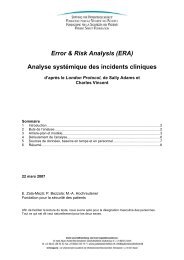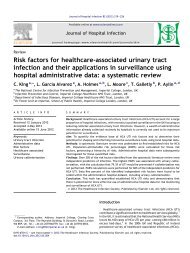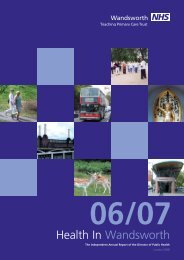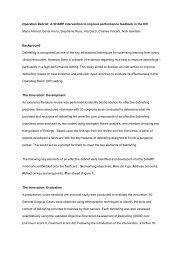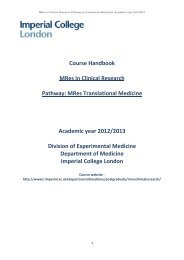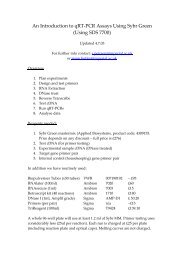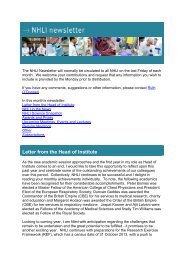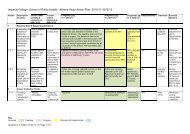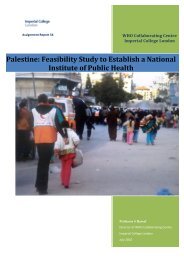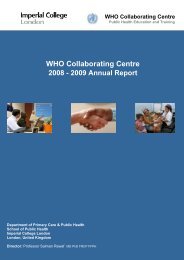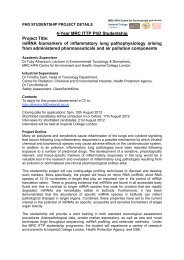QOF Plus Year 1 - Imperial College London
QOF Plus Year 1 - Imperial College London
QOF Plus Year 1 - Imperial College London
Create successful ePaper yourself
Turn your PDF publications into a flip-book with our unique Google optimized e-Paper software.
Using the graphsThe following graphs are cumulative distribution plots of attainment and exception reporting for31 Hammersmith and Fulham practices (thick red continuous line) and all practices in England(dotted thick purple line) in June and April 2008, respectively. Median values for each distributionare plotted on the X-axis (as coloured diamonds). Each attainment graph includes a summary ofthe percentage improvement required for a median practice to reach the revised <strong>QOF</strong>+ upperthreshold (dotted arrow with quoted number). Current <strong>QOF</strong> and <strong>QOF</strong>+ thresholds are marked oneach attainment graph.For a given X-Y combination, where X represents either a specified level of attainment orexception reporting, reading against the Y-axis yields the percentage of practices whose rate isless than or equal to the X-axis value. For convenience, the right hand Y-axis also includes theabsolute number of Hammersmith and Fulham practices that a given percentage represents (outof a maximum of 31 practices). Some practices gave incomplete exception reports and areomitted from the analysis for certain indicators. In these cases, the denominator number ofpractices is shown by the maximum of the right-hand Y-axis scale (typically 29).The plots allow questions of the form “How many practices achieved at most/at least n percent?”to be readily answered by simply reading the value off the corresponding Y-axis (and subtractingfrom 100% where necessary). Centiles can also be determined by picking a Y-axis percentage andfinding the corresponding X-axis value.For attainment, the ideal distribution is one that tracks along the X-axis at or close to zero on theY-axis before a very steep, late jump to 100%. A significant deviation from national performanceis evident for CS 1 (and, to a lesser degree, CHD 10 and DM 17). Worryingly, performance for CS 1does not appear to have improved appreciably in the four years since <strong>QOF</strong> was launched.The situation is less clear for exception reporting. In general, a curve lying to the left of thenational distribution and without a long asymptote to 100% on the Y-axis is probably preferable(i.e. below average rates of exception reporting and without high-rate outliers).117



